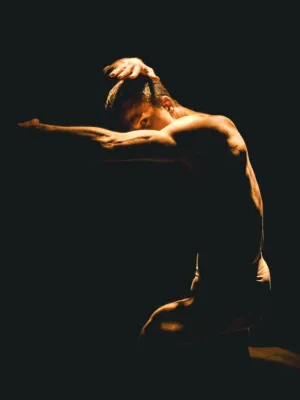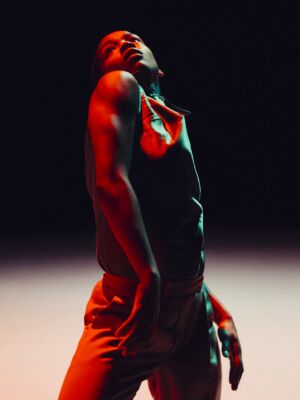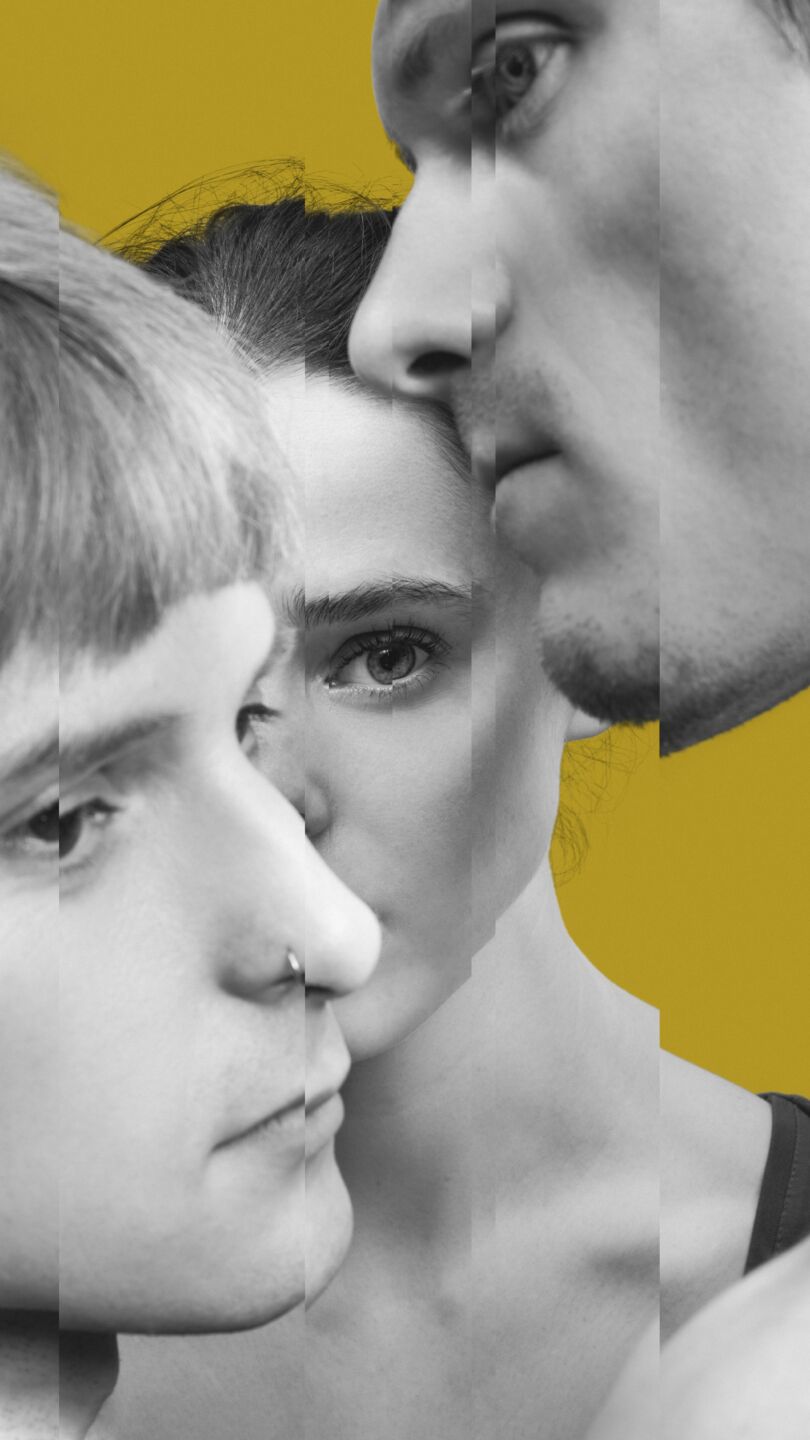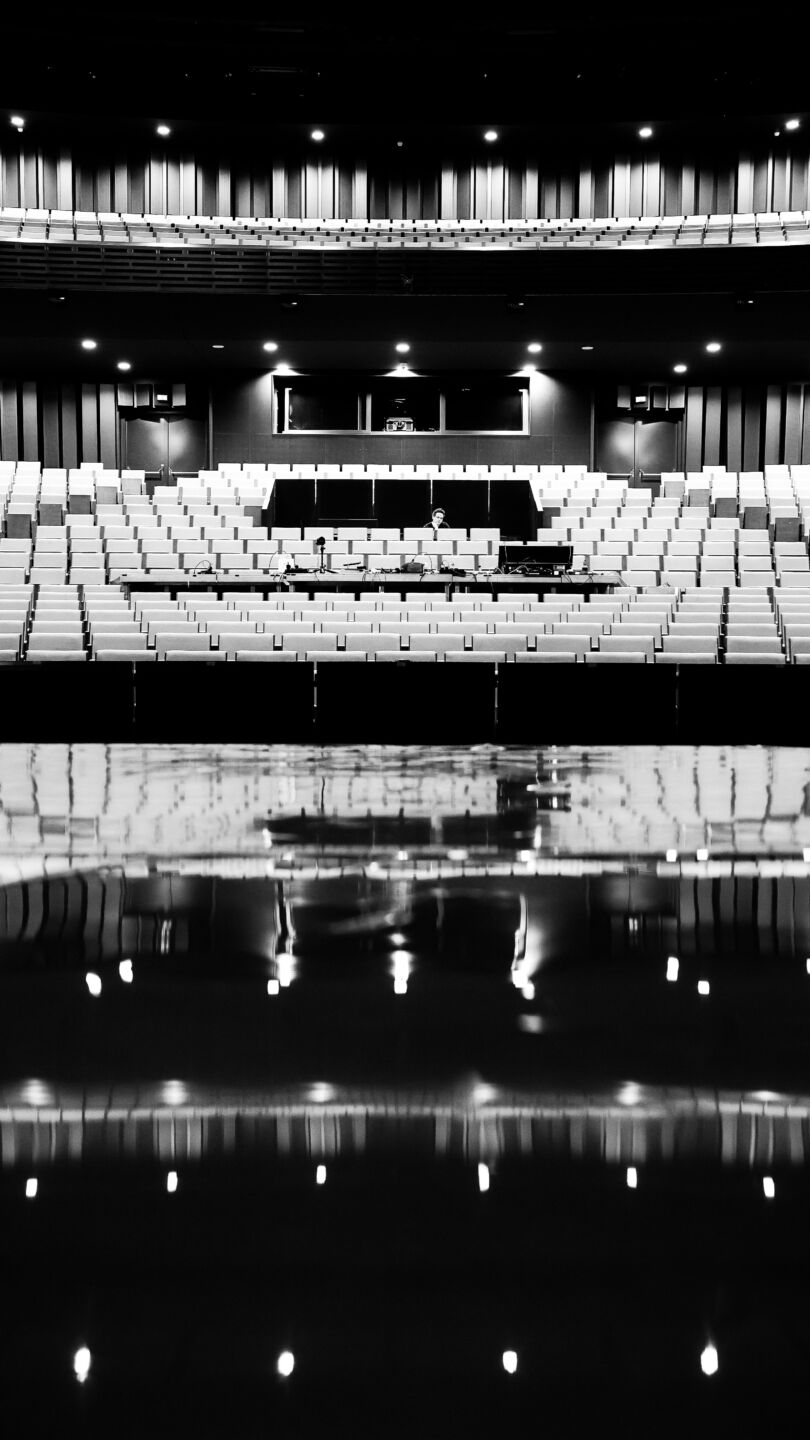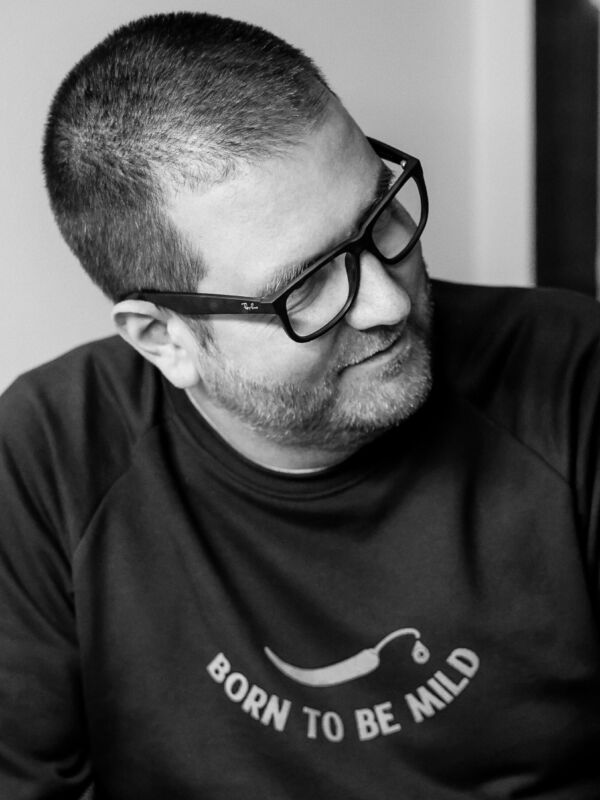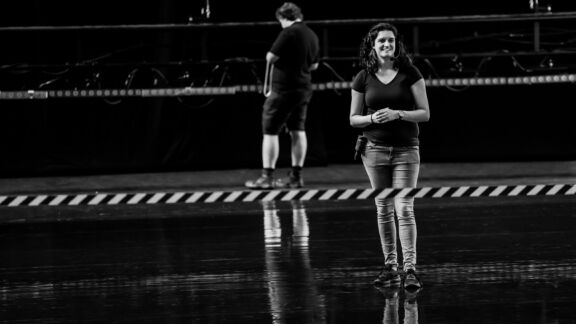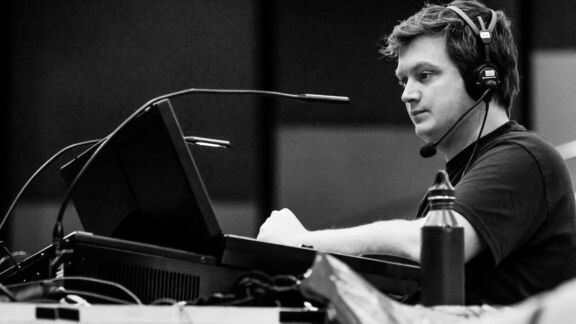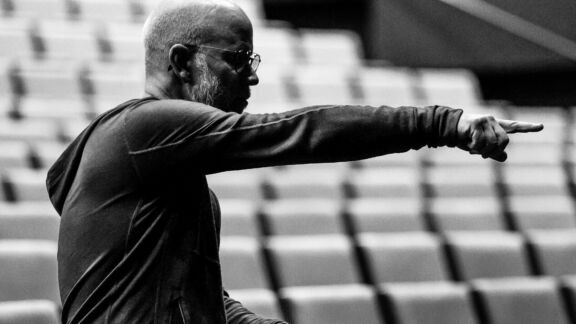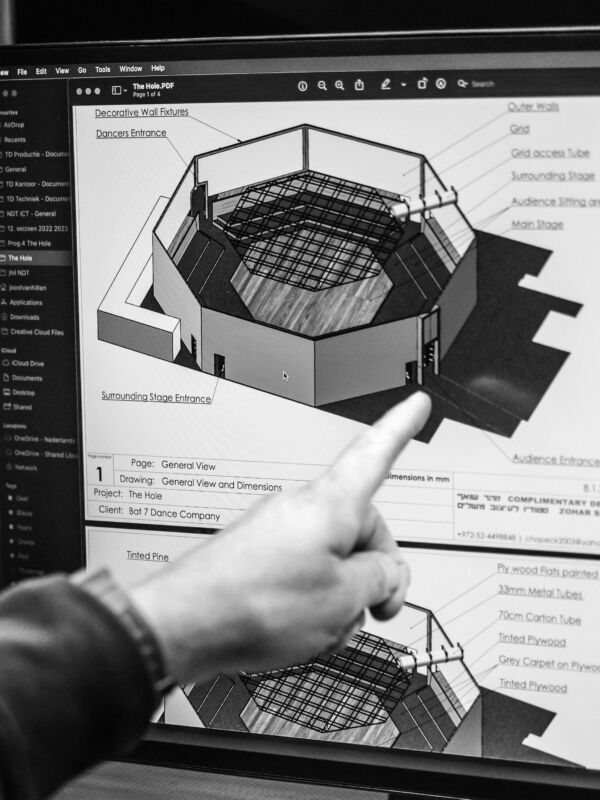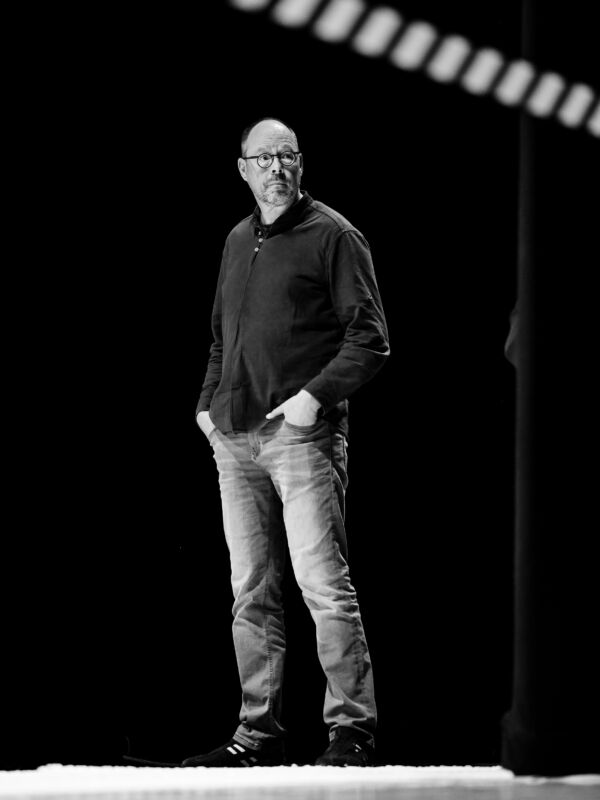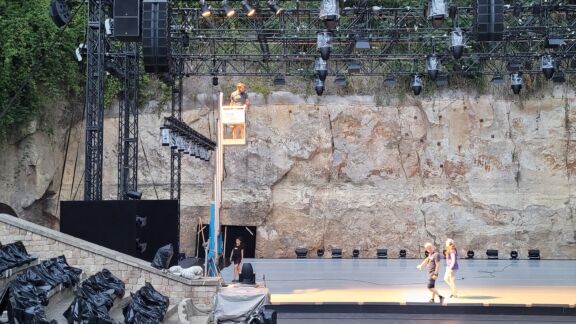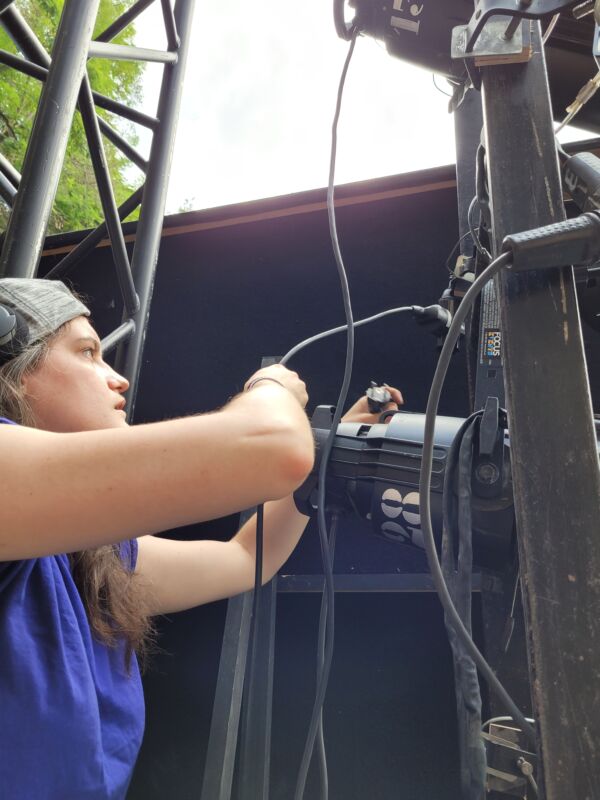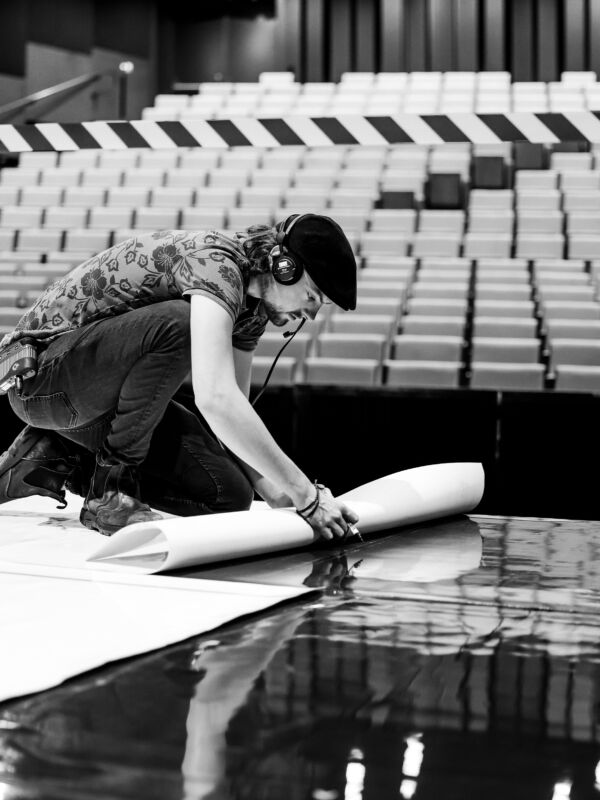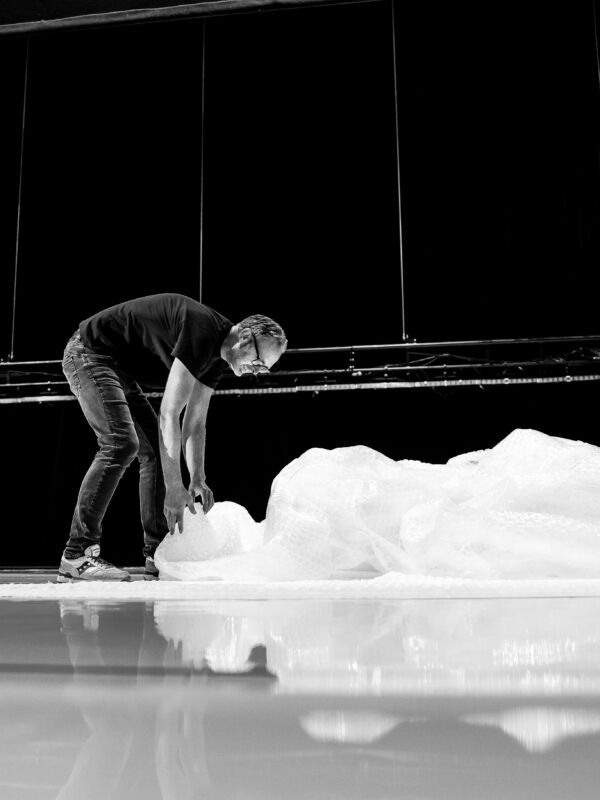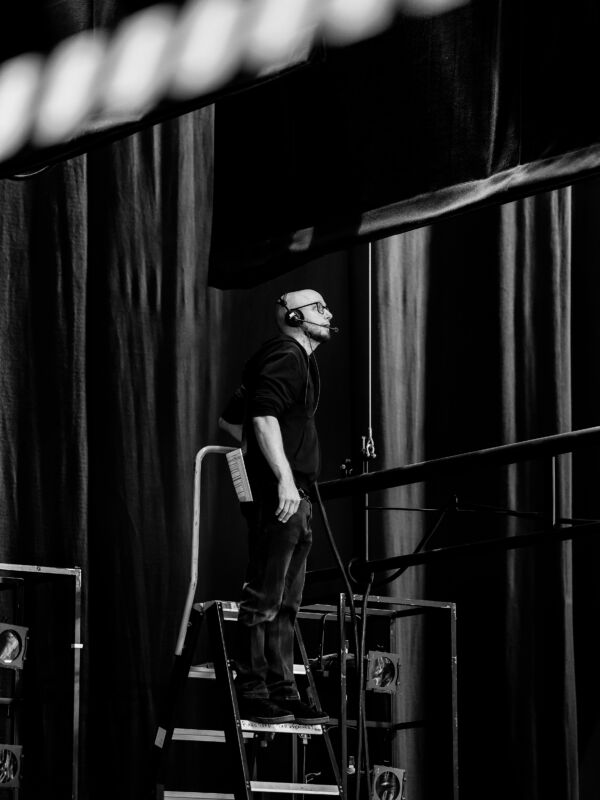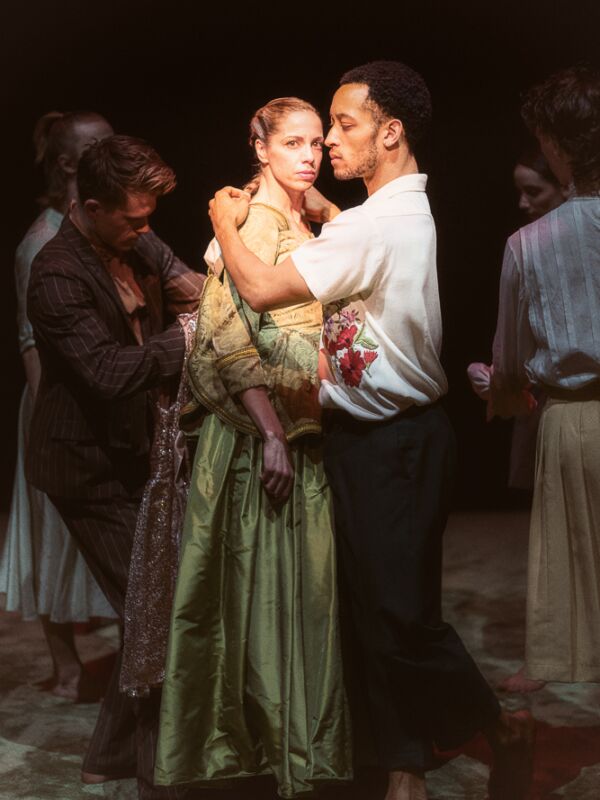“Besides Production, we are also in charge of Technical Planning: with two companies going on tour and fringe programming by the Talent Development & Education department, our technical planning must operate as tightly as Swiss clockwork. We distribute our available materials such as lighting, flooring, video equipment, etc. amongst all programmes. This is a huge logistical puzzle with hundreds of transport movements by land and sea. This doesn’t even include the scheduling for our technicians. That is why a close collaboration with Eric Blom’s department of the Technical department is essential.”
What does Joost like best about his job? “Every time a choreographer comes to us with a crazy question, like for example about that cheetah skeleton, or about certain materials or special effects, you have to delve into all kinds of material in a very short time. Using your years of technical experience tends to help. I am now exploring a request from a choreographer who wants an extra smooth floor. So, we experiment with all kinds of means to find the right smoothness. We start from scratch with every production, we do a lot of research, and we work together with the whole NDT network and with external parties.
You notice that throughout the entire company, in all departments, there exists a healthy tension towards a premiere. As the Production department, we tend to be ready a few days prior to a premiere. If we are still stressed on the day of the premiere, something is really wrong. From that point on, Eric Blom’s Technical department takes over the program, to take care of the performances in both Amare and on tour in the Netherlands and abroad, and we get to focus again on all those other (new) productions in the making.”
